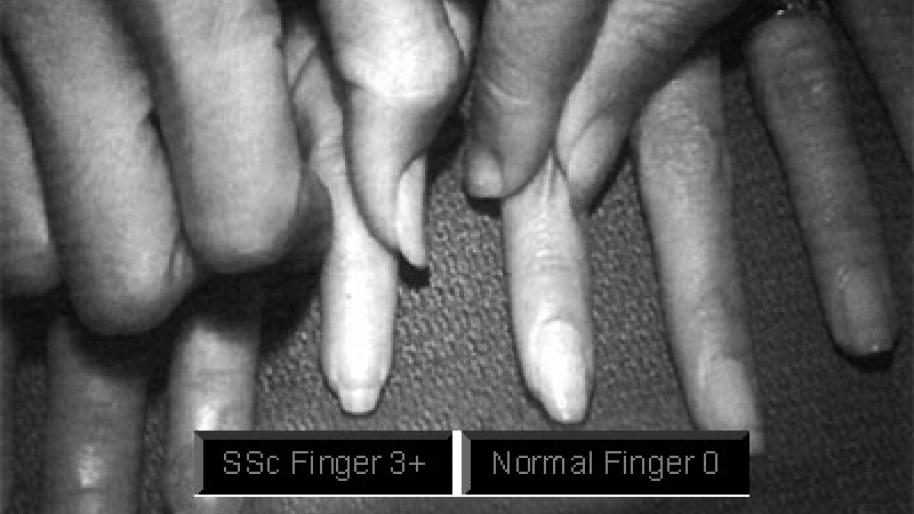Scleroderma means “hard skin”. There are many human diseases associated with tightening and thickening of the skin so there are many “sclerodermas”.
In modern medical terminology, scleroderma has evolved to be “shorthand” for two main groups of illness – systemic sclerosis and localized scleroderma.
Systemic sclerosis (SSc, scleroderma) is the most serious form of the disease. This form of scleroderma can occur at any age but is most common in women of childbearing age. It occurs in around 30 persons per million population per year and there are an estimated 125,000 active cases in the United States and perhaps 2.5 million worldwide. It is the most fatal of all the rheumatologic diseases.
Systemic scleroderma is very unpredictable although most cases can be classified into one of four different general patterns of disease (see Classification). The illness is classified based on the extent and severity of skin thickening which in turn is related to the risk profile of developing internal organ involvement. Disability and survival are mainly influenced by the presence of damage to the lungs, kidneys, heart and gastrointestinal systems.
Localized scleroderma describes conditions in which the scleroderma disease process is restricted to involvement of the skin. As a rule, localized scleroderma does not cause internal organ involvement. This is most common in children and in the elderly, although it may occur at any age.
The cause of scleroderma is not currently understood and there are no proven effective therapies for the underlying disease process. There have been many breakthroughs over the years in terms of the ability to treat specific internal organ complications and survival from scleroderma is constantly improving.

